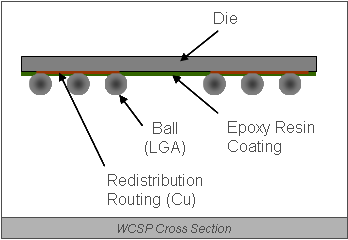Named as TCX4A01WBG, the power detection IC chip operates in the 2.5 to 3.3 voltage range, consuming 0.95mW.
It comes in ultra-small wafer level chip scale package, or WCSP of 0.79 mm x 0.79 mm x 0.5 mm. It also operates only with just two peripheral circuit components - a coupling capacitor and a bypass capacitor.
WCSP does not use interposer for packaging, but the ball is directly mounted on the die, enabling chip makes to greatly scale down a chip package size.

The small form factor and low power consumption represents a great edge over rivals’ chip solutions, allowing Toshiba better serve customers’ requirements-mostly mobile phone makers, who are doing everything to shrink chip real estates, but also extend batter life.
The new power detection IC, for example, can extract a high accuracy detection voltage from even the most complex transmission signals – such as those used for 3G or newer phones - and is also suitable for PA power control.
Additionally, the chip gives greater freedom in circuit design, which is especially important at a time when multiple bands and complex transmission signals are present due to an increase in data communication demands.
"Today's mobile phones require high-frequency power detection with a small circuit area. The ability to achieve a long battery life is one of the most pressing issues in the design of mobile phones, and has become a consumer expectation," said Talayeh Saderi, business development engineer for Toshiba America.
"Because the power amplifier consumes considerable power in a mobile phone, having control for the power amplifier is essential."
The chip is a good fit for UMTS, CDMA, WCDMA and LTE mobile phone technologies

